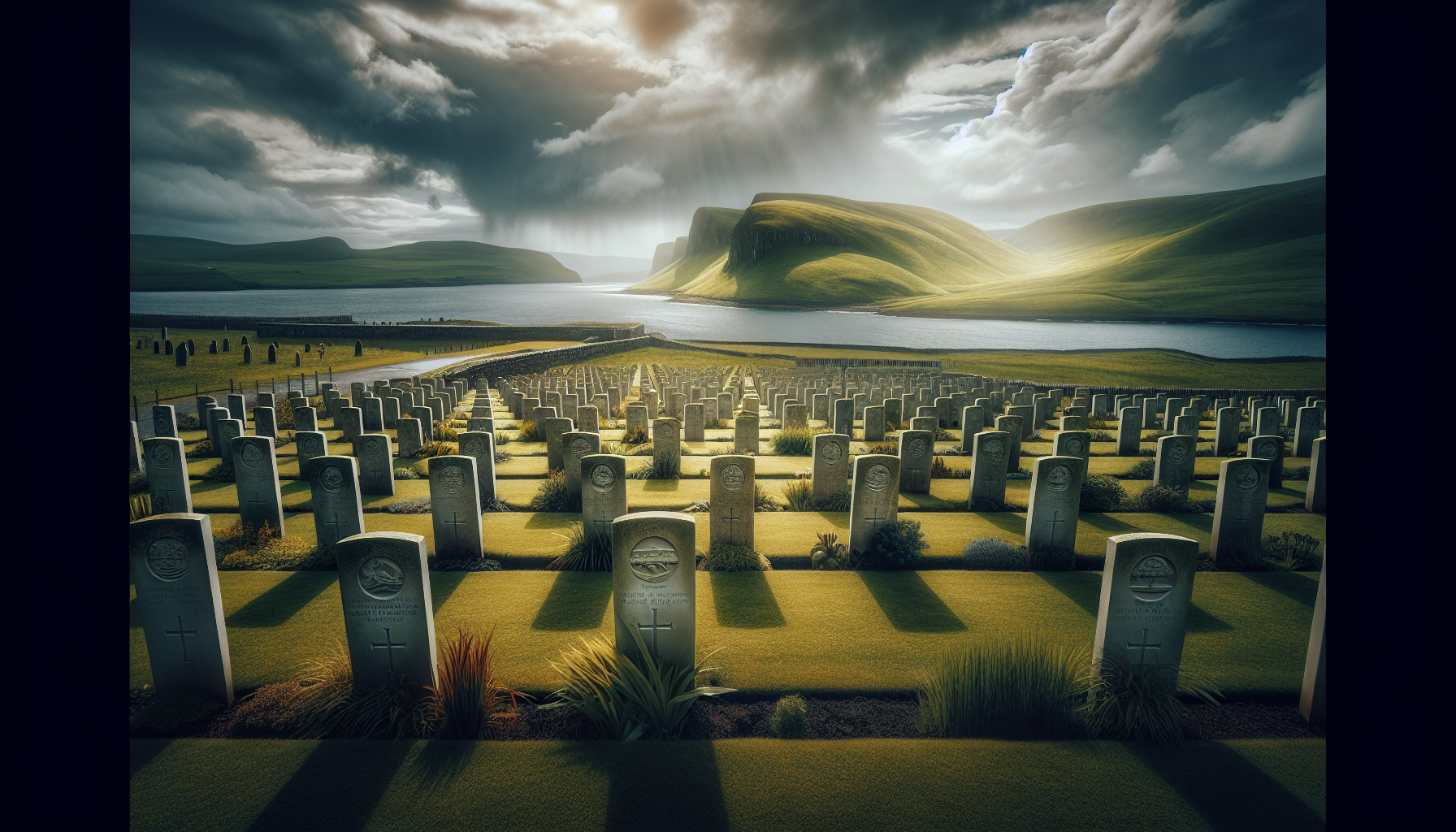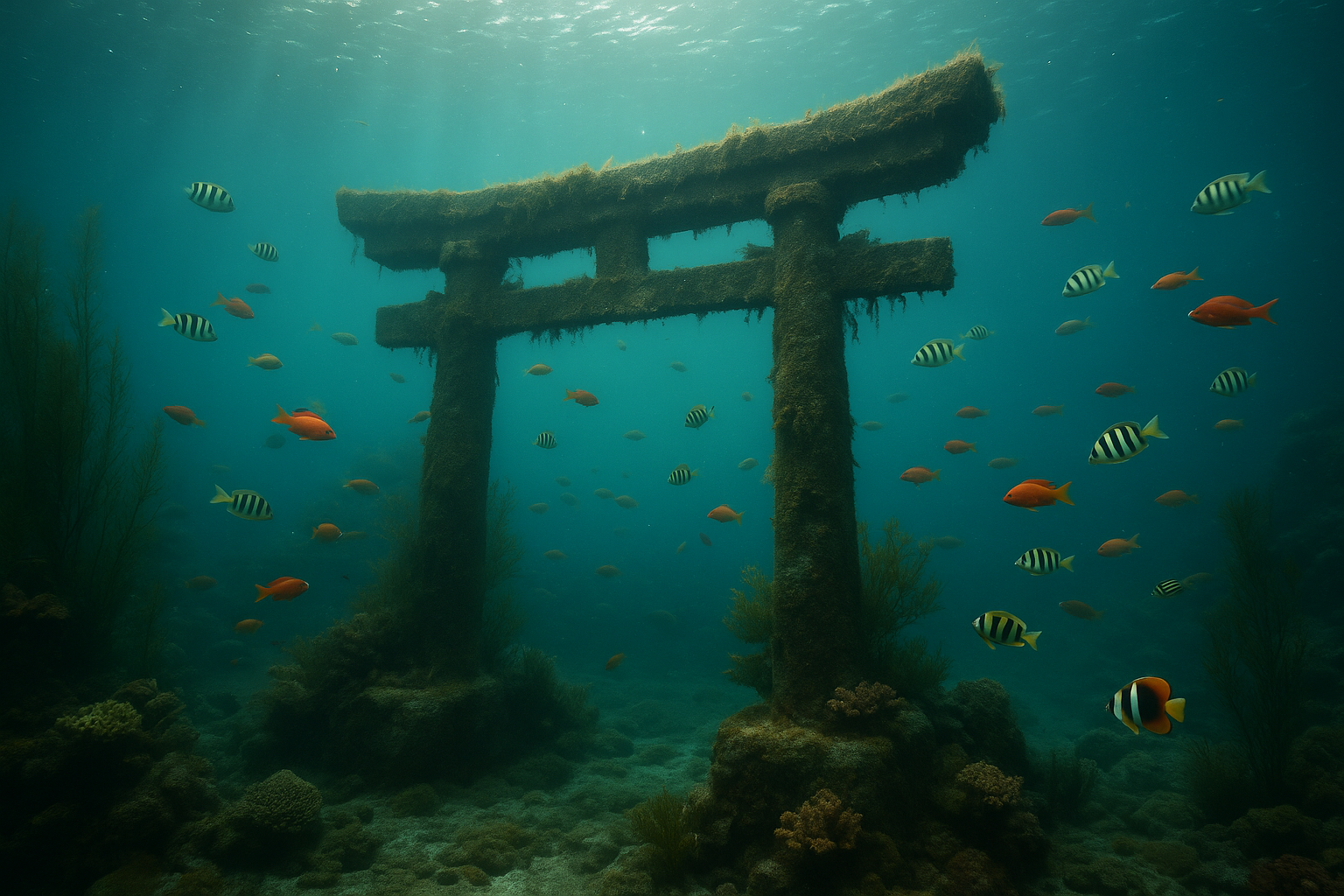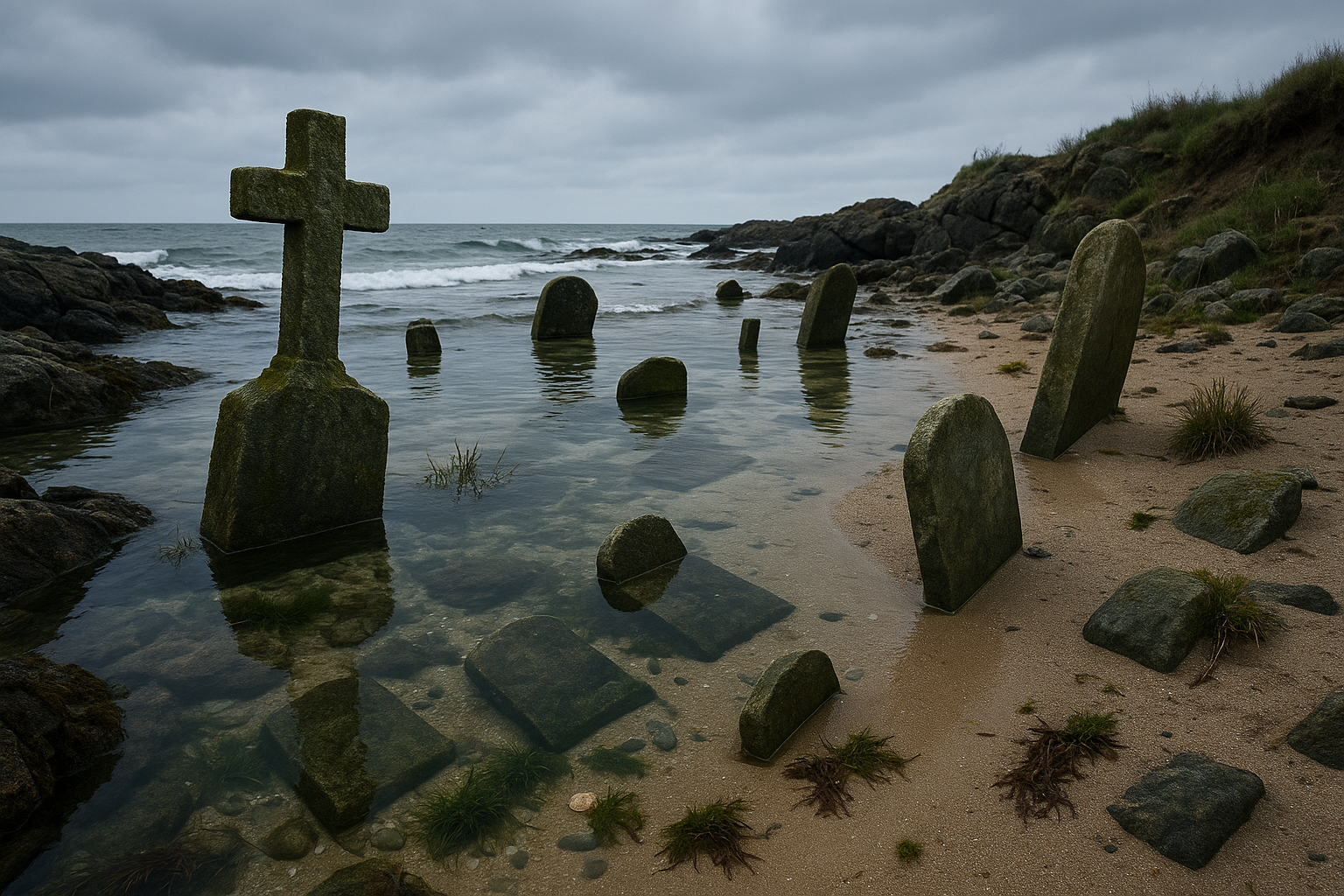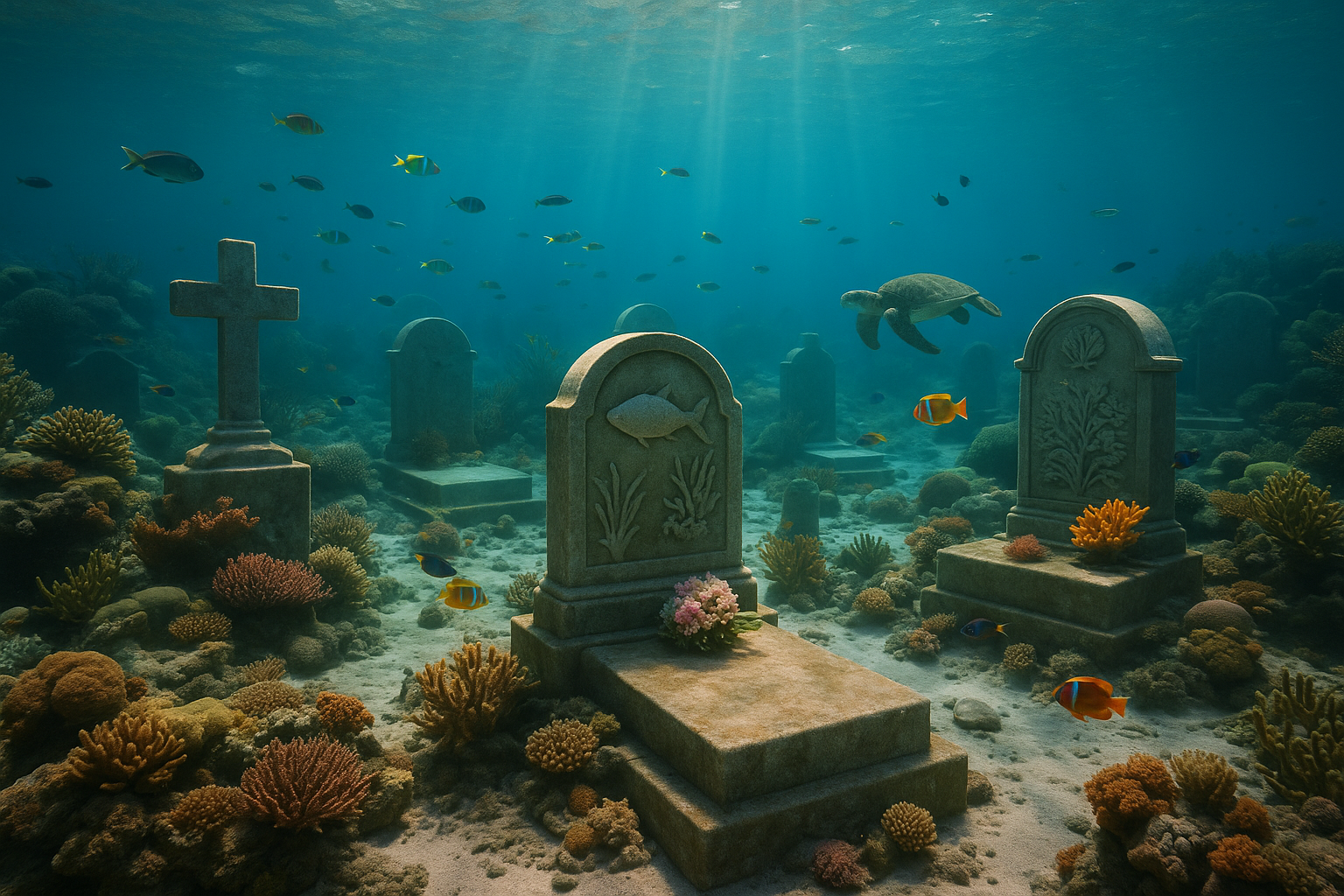Publicidade
Nestled in the tranquil and hauntingly beautiful Orkney Islands of Scotland lies a place where history and honor converge in a solemn tribute to the valor of those who braved the seas. Scapa Flow Naval Cemetery, a resting ground often shrouded in mist and mystery, serves as a poignant reminder of the sacrifices made by countless seamen during turbulent times. This serene spot, steeped in maritime lore, invites us to journey back through the annals of history, tracing the footsteps of naval heroes who played pivotal roles in shaping the course of world events. As you stand among the weathered gravestones, each telling its own silent tale, you can almost hear the echoes of clashing waves and the distant hum of bygone battles. 🌊⚓
In this article, we embark on an exploration of Scapa Flow’s rich naval legacy, delving into its significance during both World Wars and its ongoing role as a hallowed site of remembrance. We will unravel the stories behind some of the brave souls interred here, uncovering tales of courage, resilience, and sacrifice that continue to inspire generations. From the strategic importance of Scapa Flow as a naval base to the infamous scuttling of the German fleet in 1919, each chapter of its history adds a layer of depth to our understanding of this remarkable maritime cemetery. Furthermore, we will explore the broader implications of preserving such sites, discussing the delicate balance between honoring the past and educating future generations about the human cost of conflict.
As we delve into the heart of Scapa Flow’s legacy, prepare to be moved by the enduring spirit of camaraderie and bravery that resonates from every corner of this sacred ground. We’ll walk you through the historical milestones that have defined Scapa Flow, shedding light on its transformation from a vital wartime asset to a symbol of peace and remembrance. Through vivid storytelling and careful analysis, we aim to not only inform but also evoke a deep appreciation for the sacrifices made by those who rest here. Join us on this voyage through time, as we pay tribute to the indomitable souls who braved the seas, ensuring that their stories are not only remembered but honored in perpetuity. 🌍✍️
The Significance of Scapa Flow in Naval History
Scapa Flow, located in the Orkney Islands of Scotland, holds a place of great importance in naval history. As a natural harbor, it has been a pivotal strategic base for naval operations, particularly during the two World Wars. The geographical location of Scapa Flow made it an ideal base for the British Royal Navy, allowing them to control naval movements in the North Sea and beyond. Its expansive waters and surrounding landscape provided a natural defense against enemy attacks, making it a formidable stronghold during wartime.
The history of Scapa Flow dates back to the Viking era, but it was during the 20th century that it gained significant prominence. In World War I, it served as the main base for the British Grand Fleet. The base played a crucial role in maintaining a blockade against Germany, significantly contributing to the Allied powers’ eventual victory. However, it was not just a site of strategic importance but also a location of profound tragedy and sacrifice. The scuttling of the German High Seas Fleet in 1919, a dramatic self-destruction of ships to avoid them falling into enemy hands, marked a turning point in naval warfare and left a lasting legacy beneath the waters of Scapa Flow.
During World War II, Scapa Flow once again became a central hub for naval operations. The tragic sinking of HMS Royal Oak by a German U-boat in 1939, resulting in the loss of 834 lives, underscored the ongoing strategic importance and the vulnerabilities faced by the base. This event led to significant advancements in defensive measures, including the construction of the Churchill Barriers to protect the fleet anchored within Scapa Flow. The cemetery at Lyness, on the island of Hoy, stands as a poignant reminder of these events, serving as the final resting place for many who served and sacrificed during these turbulent times.
The Scapa Flow Naval Cemetery: A Tribute to the Fallen
The Scapa Flow Naval Cemetery is a solemn site that honors the bravery and sacrifice of those who served in the Royal Navy and other allied forces. Situated on the island of Hoy, the cemetery is meticulously maintained and serves as a poignant reminder of the human cost of war. As you walk through the rows of graves, each one tells a story of courage and sacrifice. The headstones, marked with the insignia of various naval divisions, offer a glimpse into the lives of those who served at sea, often far from home.
This cemetery is not only a place of remembrance but also a significant historical site. It provides insights into the maritime heritage of the region and the broader history of naval warfare. Many visitors come to pay their respects, to learn about the individuals who are buried here, and to reflect on the impact of naval conflicts on global history. The cemetery’s serene setting, with views over Scapa Flow, offers a place of quiet contemplation and reflection, making it a deeply moving experience for all who visit.
The cemetery also serves as an educational resource, with information panels and guided tours available to visitors. These resources help to contextualize the historical significance of the site and the events that led to the establishment of the cemetery. By preserving the memories of those who served, the cemetery ensures that future generations can learn about and appreciate the sacrifices made in the pursuit of peace and security.
Exploring the Legacy of Scapa Flow Through Modern Media
In today’s digital age, exploring historical sites like Scapa Flow is made even more accessible through modern media. Numerous documentaries and video content provide in-depth analyses and personal stories from the era, allowing viewers to gain a deeper understanding of the events that took place in these waters. One such resource is the informative video titled “Scapa Flow: The World War Naval Base” available on YouTube, which offers an engaging overview of the site’s historical importance. You can watch it here: Scapa Flow: The World War Naval Base.
These digital resources not only enhance our understanding of the past but also allow for greater engagement with history. Virtual tours, interactive maps, and detailed documentaries offer an immersive experience, bringing the stories of Scapa Flow and its naval cemetery to life. This accessibility encourages more people to learn about the sacrifices made during the world wars and the strategic importance of naval operations, ensuring that the legacy of Scapa Flow is preserved for future generations.
For those interested in further exploration, the following YouTube channels provide additional content related to Scapa Flow and naval history:
- History Hit – Offers documentaries and expert interviews on historical events.
- Military History Visualized – Focuses on detailed analyses of military operations and strategies.
- The Great War – Explores World War I events with weekly episodes and deep dives into specific battles.
Comparative Analysis of Naval Strategies in World Wars
The naval strategies employed during the First and Second World Wars offer fascinating insights into the evolution of maritime warfare. Scapa Flow played a crucial role in these strategies, serving as a base of operations for the British Royal Navy. Understanding the differences and similarities in naval tactics between the two wars provides a clearer picture of how military strategies adapted to technological advancements and changing geopolitical landscapes.
| Aspect | World War I | World War II |
|---|---|---|
| Naval Tactics | Predominantly battleship engagements, blockades, and fleet maneuvers. | Introduction of aircraft carriers, increased use of submarines, and combined arms operations. |
| Technological Advancements | Dreadnought battleships, early submarines, and naval mines. | Radar, sonar, advanced submarines, and amphibious assault ships. |
| Strategic Objectives | Control of sea lanes, blockades to restrict enemy trade, and decisive naval battles. | Global naval presence, protection of supply lines, and support for land operations. |
The shift from the battleship-centric strategy of World War I to the more versatile and technology-driven approaches of World War II highlights the dynamic nature of naval warfare. Scapa Flow’s role in these strategies underscores its importance as a strategic asset, adapting to new forms of warfare while continuing to serve as a key location for naval operations.

Conclusion
In conclusion, the Scapa Flow Naval Cemetery stands as a solemn testament to the courage and sacrifice of the countless souls who braved the unforgiving seas during times of conflict. As we journeyed through the rich tapestry of history woven into the very fabric of this hallowed ground, several key themes emerged, each underscoring the significance of this historic site.
First and foremost, Scapa Flow’s strategic importance during both World Wars cannot be overstated. Its natural harbor offered a formidable stronghold for the British Royal Navy, serving as a linchpin in the naval defenses of the United Kingdom. This geographical advantage, however, also made it a target, leading to tragic events such as the scuttling of the German High Seas Fleet and the sinking of HMS Royal Oak. These incidents, among others, are etched into the annals of naval history and serve as poignant reminders of the perils faced by those who served at sea.
Moreover, the cemetery itself is a poignant reflection of the international dimension of naval warfare. Here, sailors from various nations lie side by side, united in death by the common cause for which they fought. This aspect of Scapa Flow underscores the broader theme of camaraderie and shared sacrifice, transcending national boundaries and emphasizing the universal nature of the human experience in times of war.
The preservation efforts at Scapa Flow Naval Cemetery also highlight the ongoing commitment to honoring and remembering those who made the ultimate sacrifice. The meticulous care taken to maintain the gravesites and the respectful commemoration ceremonies held there serve as a testament to our collective responsibility to remember the past. These efforts not only honor the fallen but also educate future generations about the costs of war and the value of peace.
In recognizing the importance of Scapa Flow, we are reminded of the power of history to connect us to our shared humanity. The stories of bravery, loss, and resilience associated with this site inspire us to reflect on the lessons of the past and to strive for a more peaceful future. As we pay tribute to the brave souls interred at Scapa Flow, we are encouraged to carry forward their legacy, ensuring that their sacrifices were not in vain.
We invite you, our readers, to delve deeper into the history of Scapa Flow and to reflect on the profound impact of the events commemorated at this site. Whether through further research, a personal visit, or sharing these stories with others, there are many ways to honor the legacy of those who served. By doing so, we not only keep their memories alive but also contribute to a broader understanding and appreciation of our shared history.
For those interested in exploring further, we recommend visiting reputable sources such as the Commonwealth War Graves Commission (CWGC) and Historic Environment Scotland (HES), both of which offer valuable insights and resources related to Scapa Flow and other significant historical sites. These organizations provide comprehensive information and support ongoing preservation and educational efforts.
As we conclude this exploration of Scapa Flow Naval Cemetery, let us carry forward the spirit of remembrance and honor. May the stories of courage and sacrifice inspire us to work towards a world where future generations can live in peace. Let us remember, reflect, and act with intention, ensuring that the bravery of those who served at sea is never forgotten. 🌊⚓
Feel free to share your thoughts, experiences, or any additional insights you may have in the comments section. We encourage you to spread the word about the significance of Scapa Flow and to engage with others in discussions about the importance of preserving our shared history. By doing so, we can collectively contribute to a culture of remembrance and peace.
Toni Santos is a visual storyteller and maritime memory-keeper whose work navigates the haunting beauty of marine cemeteries and shipwrecks. With an eye for forgotten vessels and the silent worlds beneath the waves, Toni transforms sunken histories into visual narratives rich with mystery, loss, and the quiet passage of time.
His creative journey is anchored in a deep fascination with what the ocean hides — rusted hulls, broken figureheads, and relics of lives interrupted. Each design, illustration, or curated study Toni creates is a tribute to these submerged time capsules, blending historical detail with poetic reverence for what once sailed proudly above the surface.
With a background in handcrafted design and archival research, Toni combines artistry with investigation, reimagining the resting places of ships not as ruins, but as underwater cathedrals — places where nature and history entwine. His work evokes the solemn grandeur of decaying iron, the ghostliness of forgotten names, and the marine life that now calls these wrecks home.
As the creator behind Vizovex, Toni offers visual chronicles, curated collections, and immersive storytelling that bring shipwrecks and ocean graveyards into focus. His mission is not just to document them — but to mourn, honor, and reawaken the stories they still hold.
His work is a tribute to:
The tragic elegance of sunken ships
The stories sealed in salt and time
The silent legacy of the sea’s forgotten fleet
Whether you’re a maritime historian, a deep-sea dreamer, or someone drawn to the mysteries that rest beneath the tides, Toni invites you into a world where history doesn’t sink — it waits to be seen, one wreck, one relic, one wave-worn story at a time.





